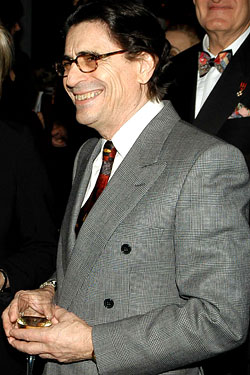
Back when ballet dancers were superstars after Nureyev but before Baryshnikov the most celebrated American male dancer was also the most unlikely. A blue-collar kid from Bayside, Queens, Edward Villella became the face of George Balanchine’s New York City Ballet during its golden age in the sixties; he was the only American dancer ever asked to dance an encore at the Bolshoi Theater in Moscow. In 1986, he started the Miami City Ballet. Tonight, the company makes its Manhattan debut at City Center.
There’s talk of companies like yours doing Balanchine better now than NYCB? What do you make of that?
When I made Miami City Ballet, it was important for me to present Balanchine the way I thought he wanted to be danced. He picked things up very fast, he had the quickest feet and the quickest mind you could imagine. When I was Pulcinella, he said, “You know, Pulcinella likes to look under the skirts of young girls.” I immediately got the characterization! He had revelations that gave you an internal point of departure, moving images of who you should be. I approach our dancers with that sense of awareness — body to body, mind to mind. You know, I stopped dancing overnight. I was dancing at the White House, I got a terrible pain in my leg, and when I got back to New York our orthopedic surgeon said, “Your career is over.” It was that blunt. I finally decided to become an artistic director so I could pass on what I’d learned.
What was appealing about the Miami’s offer?
It was an untouched canvas, mine from the ground up.
You were a street kid who played baseball. Ballet school seems like a bit of a, well, leap.
I was embarrassed and humiliated. I’d wear my baseball uniform to class and sort of walk up to the door backwards. My father, who ran a trucking business in the Garment Center, made me quit and go to college. It was just as I was falling in love with this art form, this physicality that is mind-driven, that adheres to music and theater and aesthetic senses. After college [he New York State Maritime School, where he was a champion boxer], I knew I had to be a dancer, and my father didn’t speak to me for a year. But I invited my parents to our second opening night, and I had three major roles in four ballets. After that, he became a balletomane.
You were held up as a paragon of heterosexuality. The word “virile” was used a lot.
[Laughs.] Much has been made of my athletic background and that I had this kind of athletic attack.
But thanks in part to you, there was a real change in the perception of male dancers.
I hope so. The problem, of course, is historic. Once you say you’re a dancer, you’re stigmatized. I was asked two or three times to go on Johnny Carson and I refused. They said, “Why don’t you want to do it? You’ll do some dancing, and Johnny will make fun.” I just didn’t want to participate in someone making fun of my art form, and to make reference to my heterosexuality versus the majority of gay dancers.
Are dancers better now, or were the sixties and seventies really the golden age of talent?
In the Balanchinian days, I danced Prodigal Son for sixteen years before anyone else danced it. Once you got a role, it was yours. My company has so many consecutive performances that I can give [young dancers] responsibilities beyond their grasp. You don’t spend time warehoused. If you learn a ballet, you dance it. Get ‘em out there!




